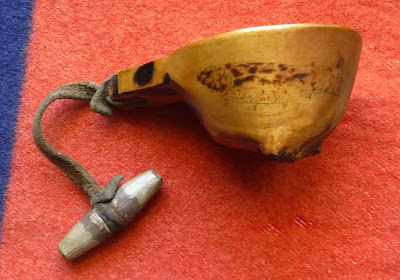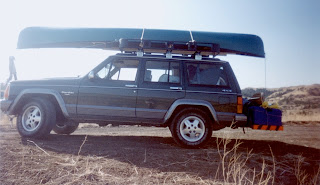“The Lament of Cadieux” or “Petit rocher de la haute montagne” was one of the most popular ballads played in French-Canada throughout the 18th century. It was originally a poem about a French-Canadian coureur des bois named Jean Cadieux who lived in Ontario with his Algonquin wife Marie.
In 1709 Jean, his wife, children and several Indian companions were paddling downstream with a load of furs bound for Montreal. At a stop near L'Île-du-Grand-Calumet (the seven falls at Grand Calumet Island), a scout discovered a group of Iroquois warriors who were preparing an ambush just ahead of them.
Cadieux decided that he and one of the younger Algonquin companions would create a diversion and attract the Iroquois war party while the rest of the Cadieux’s party would risk running the rapids with their fully loaded canoes.
Cadieux and the young brave began shooting at the Iroquois from various positions hoping to make the Iroquois believe that more people were involved in the fight. Eventually they drew the ambushers away from the river.
After the first shots rang out Jean’s family, and his Algonquian friends, launched their canoes and ran the rapids while the enemy tribe was preoccupied with the snipers in the woods.
The Algonquians miraculously survived the rapids unscathed and they paddled their heavy canoes as hard as they could for two days straight to reach the fort at Two Mountains Lake, two hundred miles away. Supposedly the Virgin Mary guided the canoe through the rapids, which were generally portaged.
Later a party was sent back to rescue Jean Cadieux and the young Algonquin brave.
When the rescue party reached the island they found the young Indian companion dead, but it was three days before they found Cadieux, wounded and very near death.
He lay in a shallow grave which he had dug for himself and in his hand he clutched a of piece birch bark upon which he had scrawled a poem with his own blood – his death poem.
“The Lament of Cadieux” or “Petit rocher de la haute montagne”
Shortly after these events the poem was put to song and was called Jean Cadieux’s Lament. It became one of the most popular tunes amongst the Voyageurs, and is known to have been sung (and most likely also fiddled) at Rendezvous in Grand Portage in the years between 1716 and 1803.
Sources:
• http://www.fiddlemn.com/the-french-connection.html
• Carolyn Podruchny, Making the Voyageur World: Travelers and Traders in the North American Fur Trade. University of Nebraska Press, Lincoln 2006
• https://leveillee.net/ancestry/jeancadieux.htm
• https://niche-canada.org/wp-content/uploads/2014/04/chapter5-Podruchny.pdf
• https://www.electriccanadian.com/transport/hudsonbay/chapter31.htm
• http://digital.library.upenn.edu/women/garvin/poets/mie-cadieux.html
• https://sites.ustboniface.ca/francoidentitaire/ontario/texte/T0203.htm
• http://www.bgcp.ca/grand-calumet.html
Jean Cadieux was our distant relative
Jean Cadieux 1671-1709 — brother-in-law of our 1st cousin 9x removed
Jean Cadieux (Cadieu) 1629-1681 — Father of Jean Cadieux
Jeanne Cadieu 1663-1696 — Daughter of Jean Cadieux (Cadieu)
Antoine Martin dit Montpellier Beaulieu 1654-1715 — Husband of Jeanne Cadieu
Denise Sevestre 1632-1700 — Mother of Antoine Martin dit Montpellier Beaulieu
Marie Pichon (Plichon) 1605-1661 — Mother of Denise Sevestre
Catherine Gauthier de la Chesnaye 1626-1702 — Daughter of Marie Pichon (Plichon)
Jean Duquet dit Desrochers 1651-1710 — Son of Catherine Gauthier de la Chesnaye
Etienne Duquet dit Desrochers 1695-1754 — Son of Jean Duquet dit Desrochers
Marie Madeleine Duquet 1734-1791 — Daughter of Etienne Duquet dit Desrochers
Gabriel Pinsonneau (Pinsono) 1770-1807 — Son of Marie Madeleine Duquet
Gabriel Pinsonneau1803-1877 — Son of Gabriel Pinsonneau (Pinsono)
Lucy Passino (Pinsonneau) 1836-1917 — Daughter of Gabriel Pinsonneau — our 2nd great-grandmother
More Fur Trade stories in my blog...
Ripples from La Prairie Voyageur Canoes -- My Voyageur Ancestry
http://laprairie-voyageur-canoes.blogspot.com/2017/10/ripples-from-la-prairie-voyageur-canoes.html










































